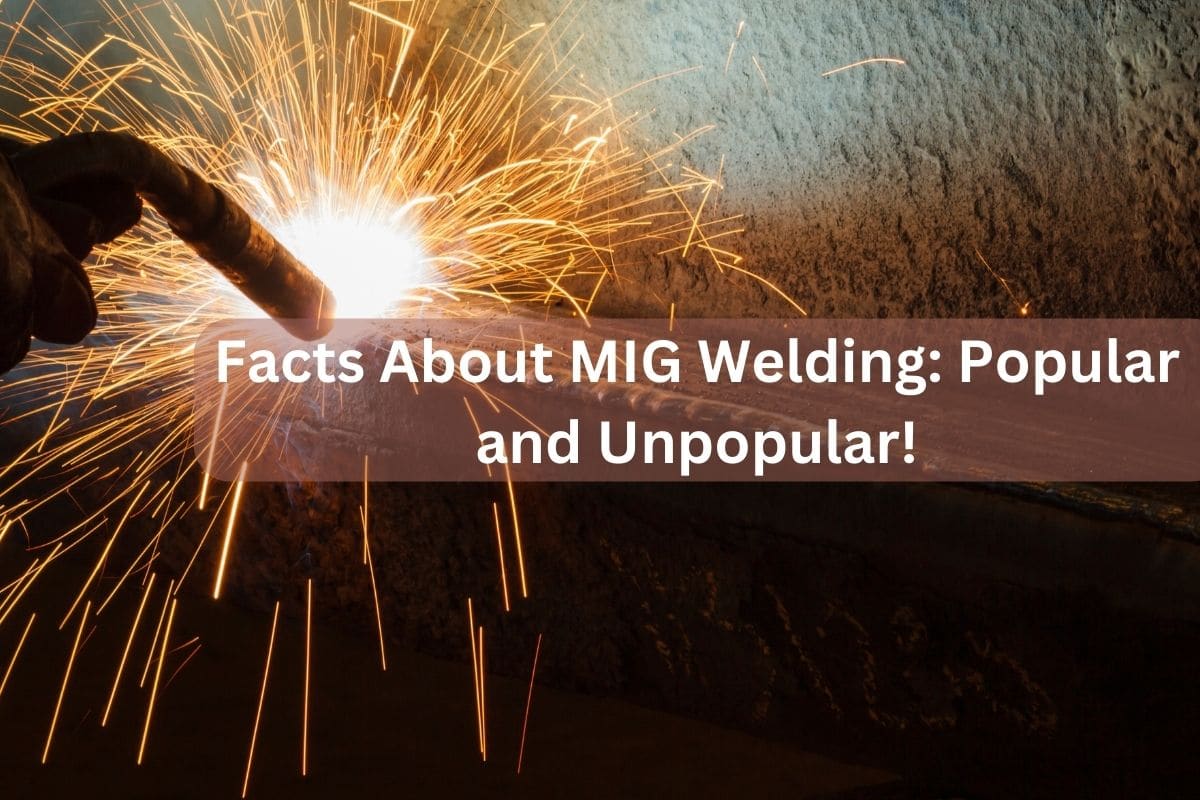Delve into the facts about MIG welding and unravel a fascinating blend of history, science, and craft. Ready to ignite your curiosity? Let’s jump right in!
Popular Facts About MIG Welding
From its historical significance to the intricate processes involved, MIG welding has continually shaped our understanding of metalwork.
Read Also : MIG Welding Gun Consumables: Incredible Detailed Guide
As we dive into the nitty-gritty, let these popular facts about MIG welding offer a comprehensive overview of this remarkable technique.
- Invention: MIG welding was developed in the 1940s during World War II to make faster and more efficient welds.
- GMAW vs. MIG: The process is technically called Gas Metal Arc Welding (GMAW). “MIG” refers to the use of an inert gas.
- Consumable Electrode: MIG welding uses a continuously fed consumable electrode to create the weld.
- Shielding Gas: The process uses a shielding gas to protect the weld from atmospheric contaminants.
- Common Gases: Commonly used gases include carbon dioxide (CO2) and argon (Ar).
- Versatility: MIG welding can be used on various metals and alloys, including carbon steel, stainless steel, and aluminum.
- Welder’s Skill: MIG welding is often considered easier to learn than some other methods like TIG welding.
- Equipment: Basic equipment includes a power supply, wire feed system, gun, and grounding clamp.
- Advantage – Speed: MIG welding is much faster than traditional stick welding.
- Applications: It’s widely used in manufacturing, construction, and automotive repair.
- Safety Concerns: Protective equipment such as welding helmets and gloves are essential due to the risks like UV radiation and spatter.
- Spatter: MIG welding can produce spatter, which are tiny droplets of molten material that can stick to surfaces near the weld.
- Cleanliness: The cleanliness of the material being welded is crucial. Contaminants can cause defects.
- Gasless MIG Welding: There’s a variant known as flux-cored arc welding, which uses a special wire filled with flux and doesn’t always require a shielding gas. Read: GAS vs Gasless MIG Welding
- Aluminum Welding: Welding aluminum with MIG often requires special equipment like a spool gun.
- Travel Direction: MIG welding can be done in a “push” or “pull” technique, affecting the weld’s shape and penetration.
- Electrode Extension: The length of wire from the contact tip to the arc can influence the weld’s properties.
Read Also : Push or Pull When MIG Welding: Simple & Solid Advice
Unpopular Facts About MIG Welding
Behind the veil of common knowledge lies a treasure trove of intricate details and lesser-known facets of MIG welding.
These gems, though not immediately obvious to the average person, can elevate one’s understanding and appreciation of the craft. Let’s venture deeper into these unpopular facts about MIG welding.
- Globular Transfer: The first unpopular facts about MIG welding is the globular transfer process, where droplets larger than the electrode diameter can result in high spatter.
- Short Circuit Frequency: In short circuit transfer, the wire might touch the weld pool and cause a short circuit up to 200 times a second.
- Transfer Transition Current: There’s a specific current level where the metal transfer mode changes, e.g., from globular to spray.
- Conductive Paste: Some welders use a conductive paste on the contact tip to improve electrical conductivity and reduce wear.
- Contact Tip Recess: The contact tip can be recessed, flush, or protruding from the nozzle, affecting shielding gas coverage and accessibility.
- Feed Rollers: There are U-groove, V-groove, and knurled feed rollers, designed specifically for certain types of welding wires.
- Gun Liner: This internal liner guides the wire from the feeder to the contact tip, and it must match the wire diameter.
- Challenges with Aluminum: Aluminum can “birdnest” at the wire feeder due to its softness, presenting unique challenges.
- Power Source Evolution: Modern MIG welders preference for inverter technology is an evolving facts about MIG welding, setting them apart from older transformer-based machines.
- Anti-Spatter Sprays: Some welders apply anti-spatter sprays or compounds to prevent spatter from sticking to surfaces.
- Arc-Starting Methods: MIG welding has various arc-starting methods such as touch start, lift arc, and high-frequency start.
- Butterfly Transfer: In certain arc conditions, molten metal droplets can take on a winged or butterfly shape during transfer.
- Heat-Affected Zone (HAZ): The area around the weld undergoes changes in its microstructure, known as the heat-affected zone.
- Welding Parameters: Advanced MIG machines can store multiple sets of welding parameters for quick changes between jobs.
- Inductance Control: The last unpopular facts about MIG welding is that some MIG welders come with inductance control, influencing the arc’s energy and spatter production.
As you explore the depths of facts about MIG welding, remember every welder starts with a spark of curiosity. Keep that flame burning and let your skills shine! Happy welding!


